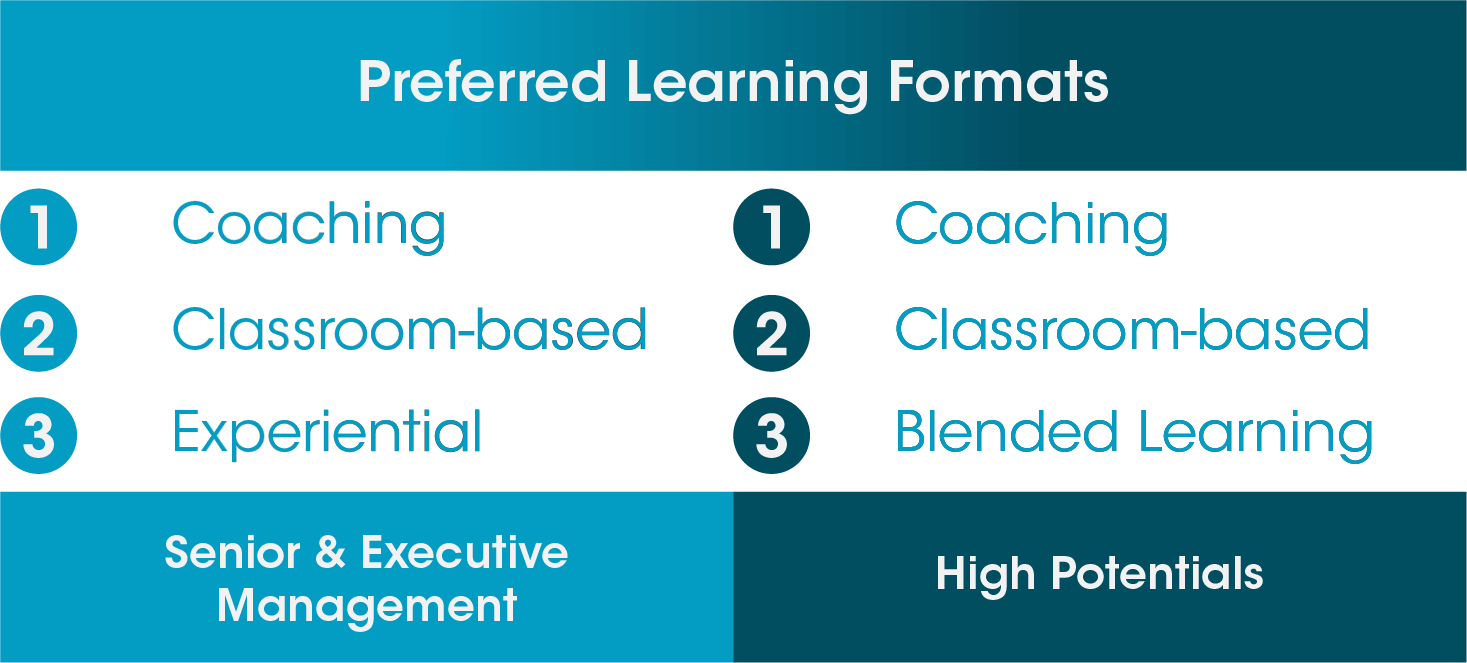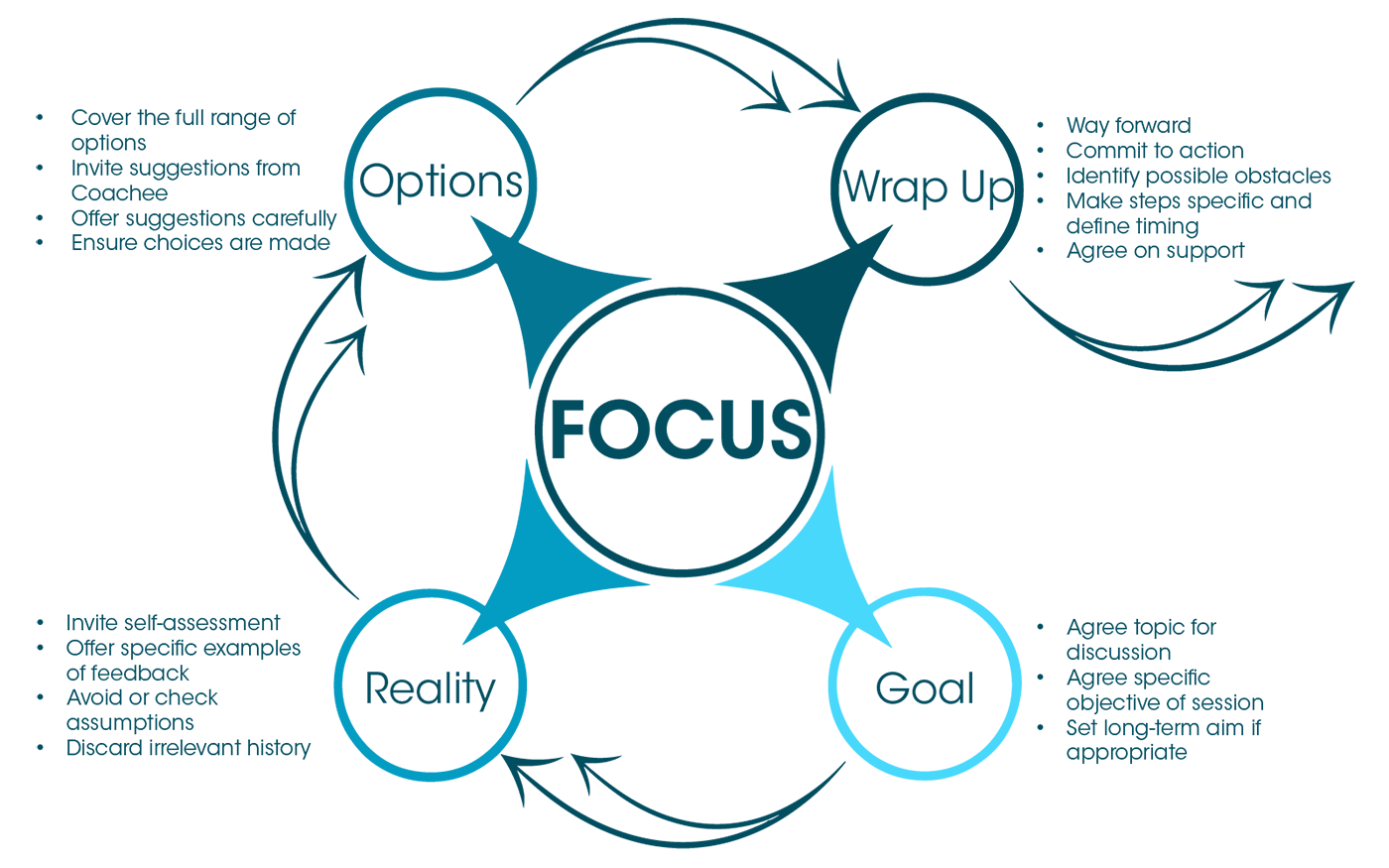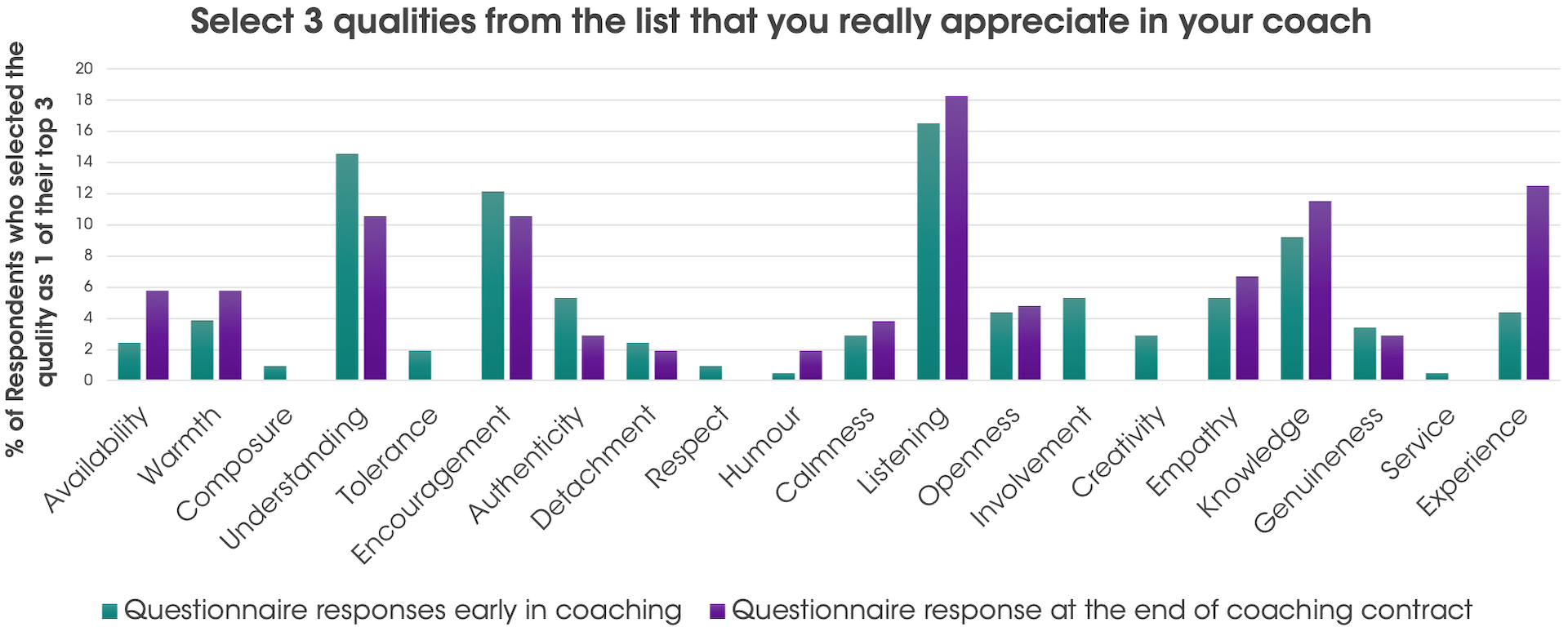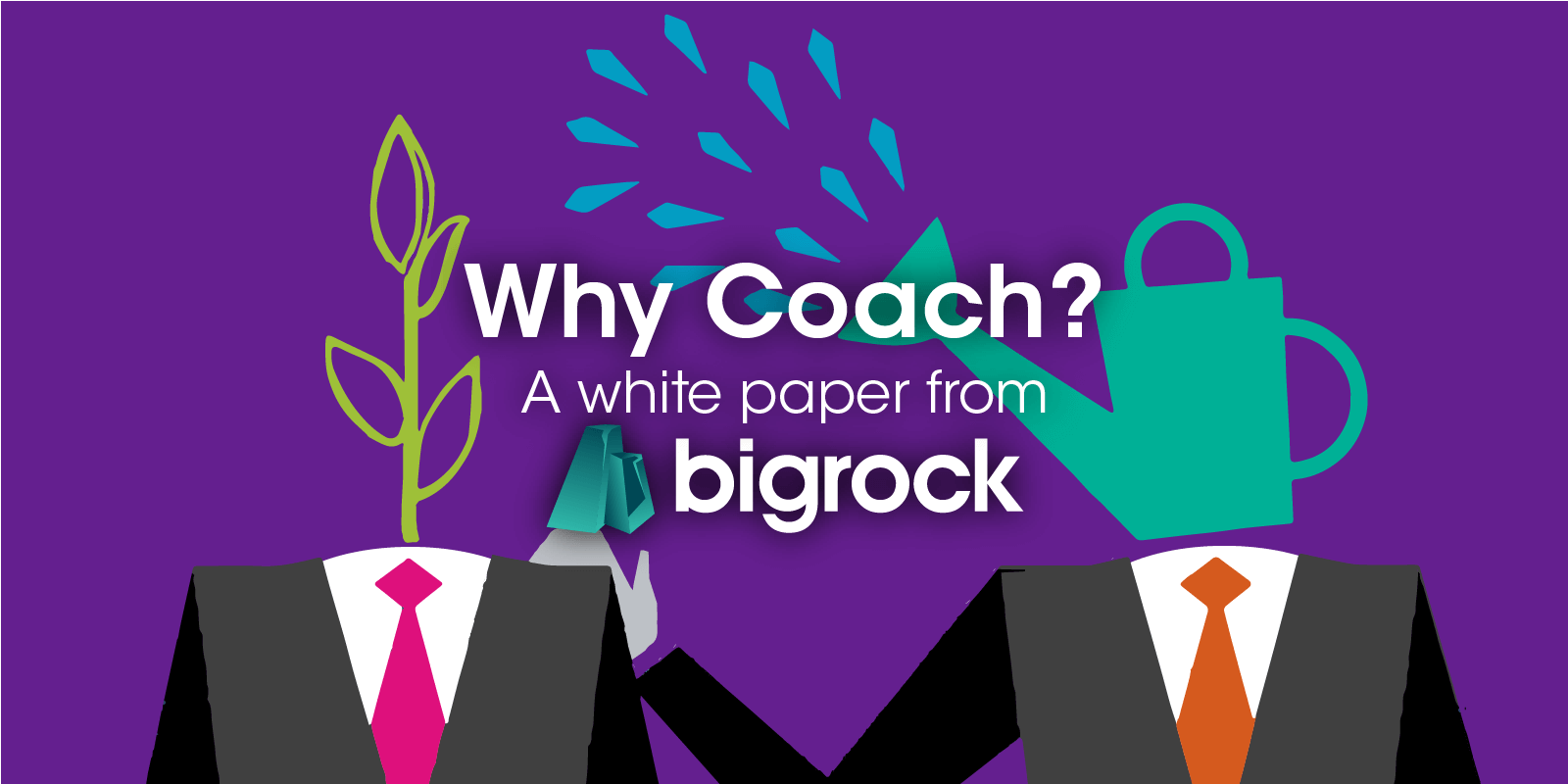Contents
1) Introduction
Coaching is a highly effective tool for optimising individual performance and, when coaching is widespread throughout a company, driving business success. Increasingly individuals want to be coached and organisations want to provide coaching. In the last few years, we have noticed a change in our clients’ attitude towards coaching. Businesses are increasingly recognising the value of coaching for senior leaders and managers. However, they are also acknowledging the power of coaching for all employees.
Business success is driven by your people. If every person in your organisation is coached to improve just 3 elements of their performance, imagine the overall effect this could have on your organisation.
Coaching has traditionally been seen as a highly effective but expensive form of development and, as such, has often been reserved for c-suite leaders. Leaders value the opportunity to speak to an external coach, who can provide an external perspective and an opinion devoid of internal bias.
However, this is coaching in just one of its forms. Organisations with a coaching culture ensure coaching is available to all employees, either from managers, from their learning and development team or from external coaches. Telesales agents, for example, rarely get the opportunity for 1 on 1 support from an external expert as the cost is usually prohibitive. Yet in the best organisations, they do receive coaching from their managers and from senior mentors.

Don’t have time to read the whole white paper right now?
No worries. Let us send you a copy so you can read it when it’s convenient for you. Just let me know where to send it (just takes 5 seconds).
2) What is Coaching?
Scholars commonly define coaching as;
“A developmental practice that requires the coach to provide an informal, ongoing form of goal-focused development aimed at improving and enhancing a person’s performance.”
We have highlighted three key elements in this definition which are worthy of note.
Informal – Coaching is not a formal presentation, it is not scripted and whilst most coaches will use some form of structure or coaching model, a coaching session should be a two-way conversation. The coach does not lecture the coachee or run through reams of material. Unlike traditional training, in many coaching sessions the coachee will do more talking than the coach.
Ongoing – Coaching is not a one hit wonder. Ideally, coaching should be ongoing, with coaching sessions delivered at regular intervals. Ideally coaching is ongoing, but to truly benefit from coaching, an individual should have at least 4 coaching sessions over several months. At Bigrock, we recommend a series of 6 sessions for our executive coachees. The time between each session is as important as the sessions themselves. In these breaks, individuals reflect on and begin to implement new approaches. Then in the session, the coach and coachee reflect on progress towards the agreed goals, before moving on to that session’s topic or focus.
Goal Focused – Though ongoing, coaching is only effective if the conversation focuses on how to proceed towards and achieve set goals. Realistic, yet challenging, goals should be agreed at the beginning of any coaching relationship. These goals should then be regularly coached to, reviewed and revised as progress is made.
In this paper we are going to focus on 2 forms of coaching, the forms our clients most commonly use and derive value from;
1. Executive Coaching – Where a senior executive, leader or high potential manager works with an external expert coach.
2. Manager / Peer Coaching – Where an individual, at any level, regularly receives guidance, feedback and development support from their manager or a senior colleague.
3) The Rise of Coaching
Coaching is a not a new thing. In early studies in to management and managers’ roles, coaching was viewed as a tool that managers could use to help their team members overcome weaknesses or deficiencies in their performance. Manager / Peer Coaching has been recognised for the last 50 years as a key part of the Manager’s role and an important way of developing employees.
In the 1990s Executive Coaching emerged as an intervention specifically aimed at senior leaders.
Now though, both researchers and businesses leaders are recognising that coaching can be used more broadly for a variety of reasons from helping leaders think more strategically, to helping high potential managers take the next step in their career, to embedding new learning following other development interventions. Most especially, coaching is being recognised as one of the most effective tools for moving individuals from good to great to exceptional.
More and more organisations and individuals are not only recognising the value of coaching, but are actively looking for ways to utilise coaching in their organisation. Zenger and Stinnett found that over 70% of large companies in Western Europe, North America and Australasia are now using coaching as a major form of management and leadership development.
In their Corporate Learning Survey 2016, Henley Business School found that in 2016 79% or smaller companies and 83% of larger companies are planning to use individual coaching as a form of learning and development. This is a much higher percentage than any other intervention. The next closest are peer-to-peer activities and team coaching, both of which share many similarities with individual coaching.
The data, the scholarship and our experience on the ground with clients suggests that businesses are increasingly recognising the true worth of coaching and the many ways it can be used to optimise performance.

Preferred Learning & Development methods for 2016: Data from Henley Business School’s Corporate Learning Survey 2016.
4) The Benefits of Coaching
Below we have listed just a few of the ways coaching can be used to benefit individuals:
- Application of new learning – Helping individuals transfer new learning from the training room to the workplace. The coach can personalise new material and link it to the individual’s particular role and specific development needs. Coaching is a great way to embed new learning following training.
- Breaking old habits and implementing new behaviours – Coaching can ensure old habits are broken and new behaviours applied and embedded in the right way.
- Greater self-awareness – Coaches often ask individuals to reflect on the way they approach tasks, their customer and colleague relationships, their business strategy and their learning. This reflection brings a greater self-awareness of the impact of their behaviours.
- The chance to ‘offload’ – Many individuals greatly value the chance to talk about their role, its pressures, challenges and rewards, in confidence. Leadership roles, in particular, can be isolating with no one either on the same level or above you to share the burden of difficult days. A coach can be a confidant and a guide.
- Greater self-belief – Many find coaching strengthens their self-belief. Rarely do many of us get the opportunity to reflect on our strengths. Coaching offers this opportunity; helping individuals see that they do have the talent to tackle the tasks in hand, whilst also giving them the tools to address perceived weaknesses.
- Greater wellbeing – Many studies have found that coaching helps reduce stress and helps build resilience and hope. Coaching gives individuals the space to consider problems from a range of perspectives and receive advice from a respected and expert source. Setting goals and then achieving them, a key element of the coaching process, also improves wellbeing.
- Ability to deal with change – greater self-awareness, self-belief and wellbeing all help individuals manage change effectively. Plus, the Coach is on hand to help the individual plan out their change strategy, implement it and deal with any specific challenges or setbacks that arise during periods of change.
For all these reasons, Bigrock are great advocates of coaching as a developmental, strategic and cultural tool.
Study after study has proven the benefits of coaching. In his book Leadership Coaching, Jonathan Passamore lists a range of studies, done under experimental conditions, that have proven just how successful coaching can be as a development tool. For example a 2008 study, conducted by Kombarakaran and colleagues on 114 US Managers, found that coaching had a positive effect on people management, engagement and productivity, relationships with managers, goal setting and prioritization, and dialogue and communication.
For us, at Bigrock, important evidence is the feedback of our clients. Our Executive Coachees, coached by the Bigrock Directors, have found that coaching helped them;
- Feel less isolated as a leader.
- Quickly understand and apply a wide range of management and leadership models.
- Focus and deliver on targets.
- Implement changes, from restructuring communication lines to realigning team structures.
- Define and articulate their vision and goals for their leaders, colleagues and team members.
- Gain confidence and self-belief.
- Accept and embrace change.
Where we have worked with managers to help them implement coaching as part of their management approach, they have found that coaching helps their team;
- Develop and embed new skills.
- Implement new processes.
- Learn from and implement feedback following observations and assessments.
- Deliver a much improved customer experience.
- Achieve and surpass their targets.
5) Coaching Styles: Directive vs Non-directive
There are a number of different approaches Coaches can take to inspire, support and develop their coachees. Different objectives, personalities and challenges will prompt different coaching styles. Most development coaching falls somewhere in the spectrum below, between what’s known as directive and non-directive coaching:

Directive to Non-Directive Coaching: Most coaches tend to use a blend of directive and non-directive coaching to suit the situation.
In directive coaching, the coach follows a process of tell, show, do. Directive coaching is about explaining and demonstrating a new approach or skill for your coachee to copy and implement. Conversely, non-directive coaching is about enabling a coachee’s own learning journey. Individuals are encouraged to find their own answers or strategies. The coach provides a listening ear and guidance, rather than direct instruction.
5.1) Coaching Models: PEDAL & GROW
There are two coaching models we use and train for directive and non-directive coaching: PEDAL and GROW.
PEDAL is a model for directive coaching, GROW is a model for non-directive coaching. These models are depicted in the images within this section.
When using the GROW model, the coach begins the discussion by asking about the coachee’s goals. They then explore the reality of the current situation, the options for change and then agree the best way forward.
PEDAL is a more task orientated style. The coach positions a new skill or process, explains and demonstrates it. The coachee then either describes or practices this skill, whilst the coach assesses their understanding and approach. The coach then gives feedback before explaining how this skill links to the coachee’s role and will benefit their approach.
Directive coaching, using models like PEDAL, is generally best used when;
- Introducing an individual to a new task.
- The individual has little or no confidence in their ability to complete the task.
- The individual is new to their role.
- There is no room for mistakes.


PEDAL coaching enables you, the coach, to actively give detailed instructions, set goals and evaluate your coachees. It enables you to minimise the chance of an individual making a mistake, as you can tell and directly model the correct way to perform a task.
Whereas, non-directive coaching, using models like GROW, is generally best used when the coachee has;
- Moderate to high competence levels in the topic area.
- Some experience in their role.
- Confidence in their abilities.
- Used a similar approach before.
- The freedom to make a mistake and learn from it.
In non-directive coaching, the coach invites the coachee to work through the problem and suggest their own ideas and solutions. It is a more empowering and developmental approach. Non-directive coaching encourages the coachee to try new approaches and learn from their mistakes.
Experiments into coaching styles have found that those who receive directive coaching, where they are shown how to do a specific task, perform better on those specific tasks and rapidly increase their expertise in that specific area. However, those who receive non-directive coaching will take longer to reach the same level of expertise in a particular specialism but will be more used to creating their own strategies and analysing what to do and how to improve. As such, whilst non-directive coachees may take longer to learn the initial task, they will be abler to adapt to new tasks without further coaching.
In reality, most individuals will benefit from a blend of non-directive and directive coaching. Typically, coaches will find that they stray between coaching models, using parts of one and parts of another throughout their coaching, as suits their requirements. As the Directive to Non-Directive Coaching model indicated, coaches do not face a binary choice between directive or non-directive, instead they should traverse the spectrum of coaching styles throughout the coaching journey.
6) The Coaching Relationship
A study, by Ashridge Executive Education’s Centre for Coaching looked at the qualities individuals most appreciated in a coach. Their survey data indicated that Understanding and Listening were the qualities most valued, both early in the coaching process and at the end of a coaching programme. Coachees find coaching most valuable when they feel their coach is listening to them, understanding their challenges and adapting their approach to suit these development needs.

Whilst a coaching model is helpful for the coach, it is really a behind the scenes tool. The best coaches have a wide range of tools they can call upon. For the most part, though, the coachee won’t notice these tools. For them, what makes a great coaching experience is a listening coach who reacts with understanding and encouragement.
Evidence has shown that the most important element of coaching is not the models used or the approach taken, but the relationship between coach and coachee. For coaching to be successful, this relationship should be engaging and trustful. The coachee should feel comfortable enough to share new ideas, lay bare their weaknesses and talk candidly about their approach.
An experiment in to the effectiveness of mentoring and coaching, conducted by Ragins, Cotoon and Miller, found that where individuals were dissatisfied with their mentor they made little or no progress. Whereas those who had a strong coaching relationship demonstrated a more positive attitude towards their work, promotion prospects, organisation and career. This result did not change if the coach used a different style or approach; the key factor was the coaching relationship.
7) So…Why Coach?
In this paper, we have explored the uses and benefits of coaching. We have seen how coaching is increasingly favoured by individuals, leaders and organisations alike. We have explored the different styles of coaching and how it can be adapted to suit different individuals and different situations.
So, overall, why do we believe in coaching? Why should you embrace coaching in your business?
- Coaching enables a culture of continued development. Regular coaching is the bedrock of in-role learning and development. Organisations that implement a coaching culture, give each individual the opportunity and tools to continually assess, adapt and develop their approach.
- Coaching enables organisations to make the most of expertise. Manager / Peer Coaching enables senior figures in your organisation to pass on their expertise to more junior team members. As managers and leaders advance up the ranks, often away from customers and clients, coaching enables them to pass on their expertise to those filling their roles. Executive Coaching can be one of the best ways to gain external expertise. Working with an executive coach over a period of several months can be an equivalent cost and time commitment to attending a 2-day leadership programme. Yet this long term relationship, means new approaches and strategies can be implemented throughout the programme.
- It is an ongoing, cost effective solution that can benefit organisations of all sizes. It’s not as time consuming or as expensive as you might think! A coaching session can be as short or as long as you need it to be and should be scheduled as part of everyday leadership and management activities. Coaching skills can be incorporated in to your management and leadership inductions or ongoing training. Once managers understand their role as coaches and have the skills and confidence to coach and develop their teams, then ongoing development in your business can be very cost effective.
- Coaching will set you apart as a business and an employer. Increasingly, coaching is the learning method of choice for employees at every career stage. Talented individuals look for an organisation that will help them develop and advance their career. A coaching culture will help you attract, develop and retain the best in your industry.
- Coaching delivers results. Coaching helps your people consider and embrace new ideas, implement changes and enhance their skills. All these things, done well, will have a positive impact on your customer experience and your commercial outcomes.
We highly recommend coaching as an individual and organisational development tool. We believe it should form part of your ongoing development activity and be a fundamental part of any new learning programme.
Bigrock Coaching Services
Bigrock offer the following coaching services:
- Executive coaching – We have a pool of executive coaches for you and your business leaders to choose from. We take a practical approach to coaching, that gives Leaders real strategies and business insights which they can use to implement change. Discover more at https://sandbox.bigrockhq.com/training-programmes/leadership-executive-coaching/.
- Management programmes to develop coaching skills – Our management programmes include sessions on how to deliver effective coaching. We can train your Leaders and Managers how and when to use different coaching styles, both in group and individual coaching situations. We can tailor a programme to meet your requirements or design a coaching course bespoke to your needs. Discover more at https://sandbox.bigrockhq.com/training-programmes/management/.
- Organisational change programmes to implement a coaching culture – We can work with you to design and deliver a change programme that will implement and embed a culture of coaching and development across your organisation. Discover more at https://sandbox.bigrockhq.com/business-transformation/.
- Our digital coaching tool Coachical – Coachical provides learners with the right learning materials at the right time, via a dynamic, personalised coaching plan. This coaching plan suggests learning materials and activities to reflect the learner’s diagnosed needs and development progress. Plus, with regular reminder notifications from our automated ‘robo-coaches’, learners are prompted to complete their learning journey, refresh their knowledge and embed key skills in role. Discover more at https://coachical.com/.
If you would like to discuss your coaching needs, please call 01280 820 780 or email enquiries@bigrockhq.com to arrange a consultation.
Subscribe below to receive our latest insights direct to your mailbox.
Bibliography
De Haan, Erik and Culpin, Vicki and Curd, Judy from the Ashridge Centre for Coaching ‘Executive coaching in practice: what determines helpfulness for clients of coaching?’ Personnel Review, Vol. 40 No. 1, 2011, p. 24-44.
Feldman, Daniel C. and Lankau, Melenie J. ‘Executive Coaching: A Review and Agenda for Future Research’, Journal of Management, Vol. 31 No. 6, December 2005, 829-848.
Green, Holly ‘Know When to Manage and When to Coach’, Forbes, published 1 May 2012, http://www.forbes.com/sites/work-in-progress/2012/05/01/know-when-to-manage-and-when-to-coach/ (Accessed 22/2/2016).
Grant, Anthony M. ‘The Efficacy of Executive Coaching in Times of Organisational Change’, Journal of Change Management, 14:2, (2014), 258-280.
Hawkins, Peter, Creating a Coaching Culture, Berkshire, 2012.
Henley Business School, Corporate Learning Survey 2016, http://www.henley.ac.uk/files/pdf/exec-ed/Corporate_Learning_Survey_2016_report_final_WEB.pdf (accessed 18/2/2016).
Michaels, Ed and Handfield-Jones, Helen and Axelrod, Beth, The War for Talent, Boston, Massachusetts (2001).
Passamore, Jonathan, ‘Leadership Coaching’, in Leadership Coaching: Working with leaders to develop elite performance, London, 2010.
Tak-yin Hui, Ray and Sue-Chan, Christina and Wood, Robert E. ‘The Contrasting Effects of Coaching Style on Task Performance: The Mediating Roles of Subjective Task Complexity and Self-Set Goal’, Human Resource Development Quarterly, vol. 24, no. 4, Winter 2013, 429-458.


